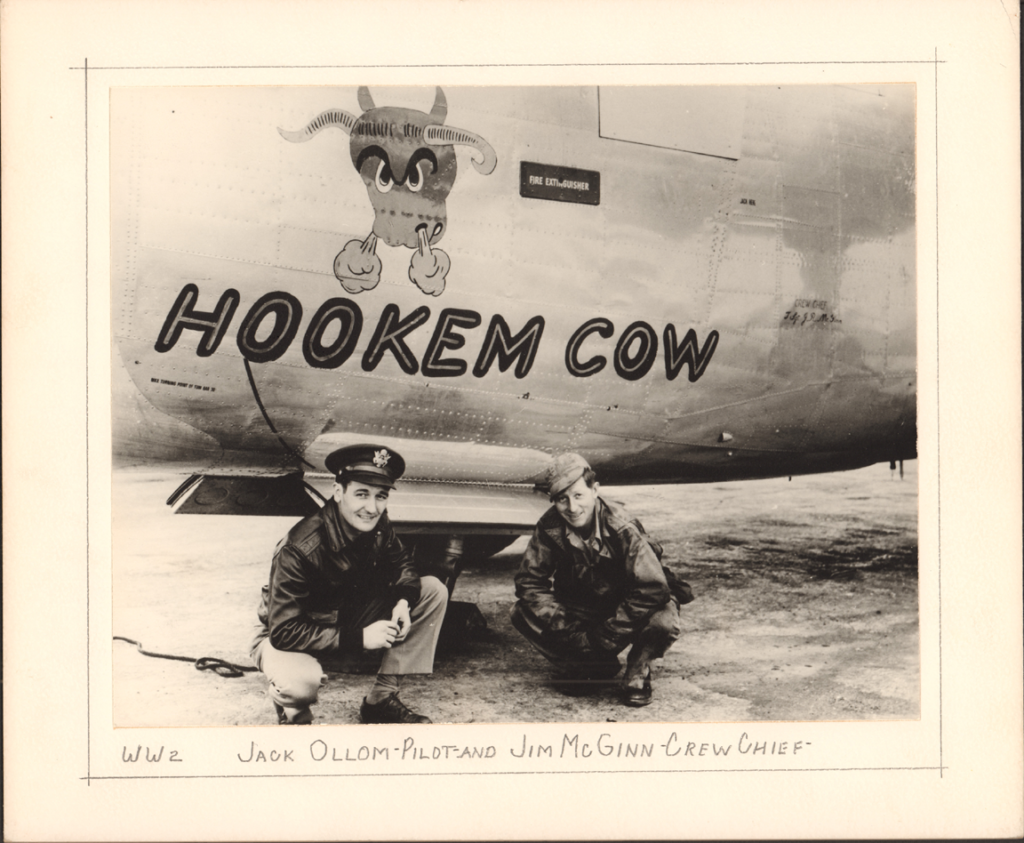
Tim Spitzack
Editor
On any given day before the outset of World War II one could see small aircraft buzzing over the city of South St. Paul enroute to the drolly named Hook-Em-Cow Field: a mowed-over farm field at the southern border of the city that had a level surface suitable for landings. The runway was the brainchild of Paul A. Wilson and Paul Forsythe, two members of the Hook-Em-Cow Flying Club who had jointly purchased a Piper Cub airplane in 1939 and needed a place to use and store the aircraft.
They created the landing strip and built a garage on site as a makeshift hangar, but their ownership of the field was short-lived. Their fledgling operation soon grew into a full-fledged airport that would support the war effort. The name of their club was a nod to the city’s former booster club that was organized in 1916 to help reinvigorate the St. Paul Winter Carnival. The raucous group was known for its Wild West costumes and rodeo stunts. They held an annual celebration with a parade in South St. Paul, marched in other parades across the region, and hosted rodeos and booyas.
According to the city’s centennial history book, Richard McGinnis, a pilot with Northwest Airlines, formed McGinnis Aviation and took over operation of Hook-Em-Cow Field in 1940. A grand opening ceremony was held on September 29 of that year and the first true hangar was built in 1941. A flight school formed under the federally funded Civilian Pilot Training Program also opened during that time at the newly renamed McGinnis Field.
In 1942, the U.S. Navy purchased the airfield and invested more than $1 million to create an auxiliary primary flight school for its Minneapolis Training Squadron 1B, based at Wold-Chamberlain Field, now MSP International Airport. They added eight hangars, two large barracks, a control tower, boiler room, powerhouse, apron and runway, and a “landing circle” that served as a target for simulated aircraft carrier landings. For four years, Navy air cadets – including future president George H. W. Bush – could be seen flying training missions in a yellow Stearman or an N3N, both single engine biplanes with open cockpits.
The airport was renamed Fleming Field in 1943 in memory of Captain Richard Eugene Fleming, a U.S. Marine Corps aviator from St. Paul who was posthumously awarded the Medal of Honor for his heroism during the Battle of Midway a year earlier. Also serving overseas during the war were Capt. John Ollom and Crew Chief James McGinn, men from South St. Paul who were assigned to the 755th Bomber Squadron in Norwich, England. They named their B-24 bomber the Hookem Cow Liberator after their hometown club and had the club’s logo painted on the nose of the aircraft. The plane was used on several missions before meeting a perilous demise near the end of the war. On that dark and foggy morning, its crew took off from Horsham St. Faith airfield in Norfolk and headed for France. Shortly after takeoff, one of its engines caught fire. Unable to maintain altitude, the plane hit a power line near the village of Hainford and crashed, killing five of the 7-member crew. It was a limited crew that day and neither of the men from South St. Paul was on the plane. After the war, Ollom became a private pilot and McGinn resumed working at the stockyards.
Following the war, the Navy sold the airport to the City of South St. Paul for $1 on a 99-year deed. After the acquisition, the city formed a 3-member Board of Aeronautics to guide the airport’s growth and development. Today the airport is managed by the city’s Airport Advisory Commission, a 9-member board appointed by the mayor and city council to 3-year terms. The airport manager is Andrew Wall.
Fleming Field is home to four flight schools, several aircraft maintenance and repair firms, the Civil Air Patrol, Experimental Aircraft Association, Minnesota Military Figure Society (a model building group) and the Commemorative Air Force Minnesota Wing. The Wing was formed in 1971 as the first charter unit of the national Commemorative Air Force, which restores combat aircraft flown by branches of the U.S. military, and selected aircraft of other nations. The Wing operates a museum at Fleming Field that houses six aircraft, a large motor pool fleet, a collection of World War II artifacts and the fully restored B-25 Miss Mitchell, which it takes to airshows throughout the country. It also hosts two popular hangar dances each year featuring Big Band music and participants dressed in World War II attire. The next dance is held Saturday, June 8.
Strange occurrences
Fleming Field has not been without its share of controversies. In the mid-1950s, several people reported seeing UFOs nearby. Most likely they saw a stratospheric helium-filled balloon. Between 1955 and 1958 Minneapolis-based Winzen Research Inc., which built the balloons, used Fleming Field as the main launch center for a military project called Project Manhigh. The endeavor took men in capsules attached to balloons to the middle layers of the stratosphere to investigate how humans reacted physically and psychologically to time in space, and to study design principles for space capsules.
Another curious event happened in December 1952, when two 16-year-old boys sneaked into the airport, climbed into a Beechcraft Bonanza single engine plane and somehow took flight. While few details are known of their joyride, the escapade included nearly hitting a train at the railyard in Inver Grove Heights and landing about 200 yards short of the runway at Fleming Field. The owner of the $17,000 aircraft was gracious in his retelling of the event, saying “An experienced pilot might not have managed a better landing, as the conditions were icy and dark.”
<<< Back to Home








